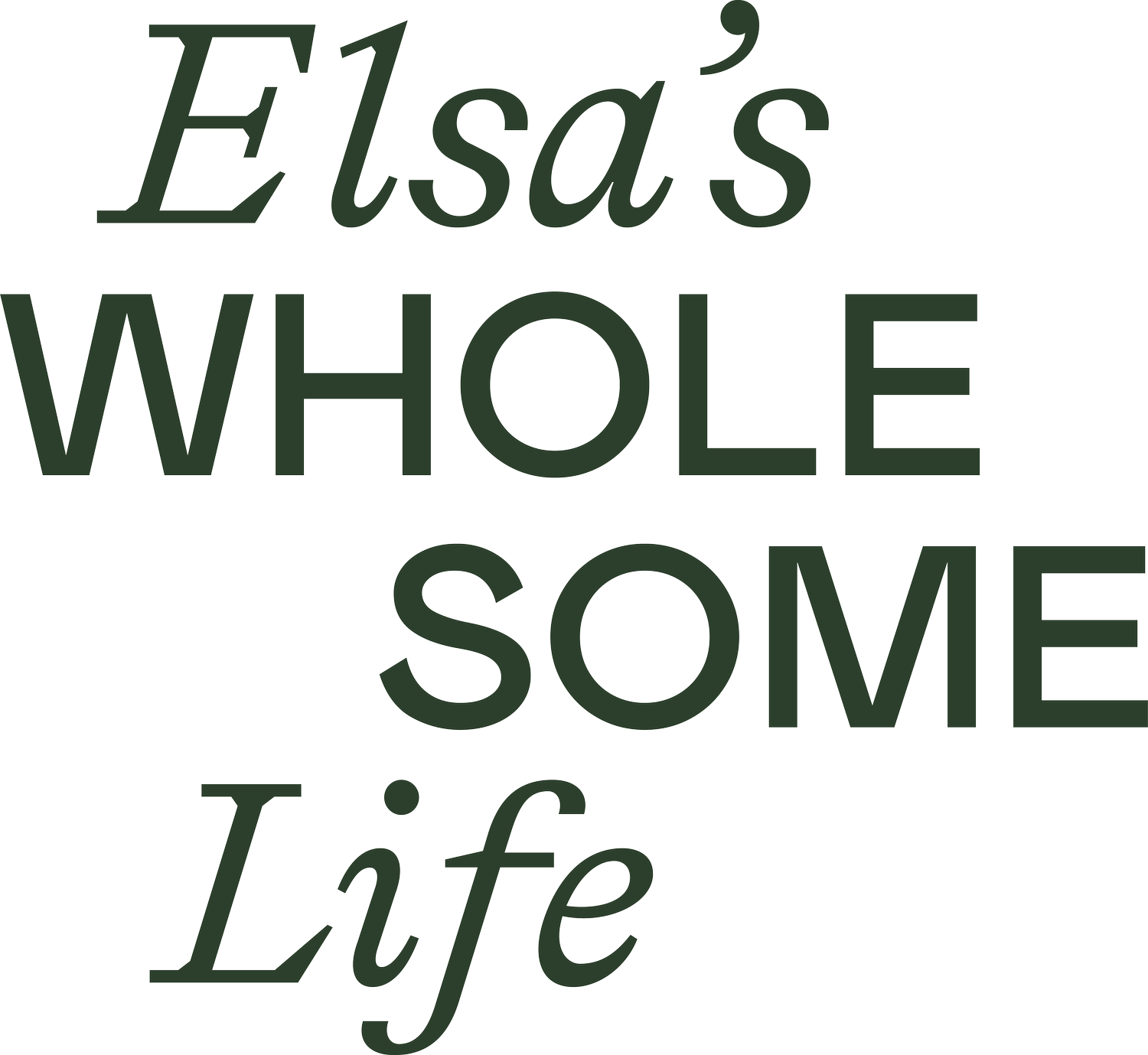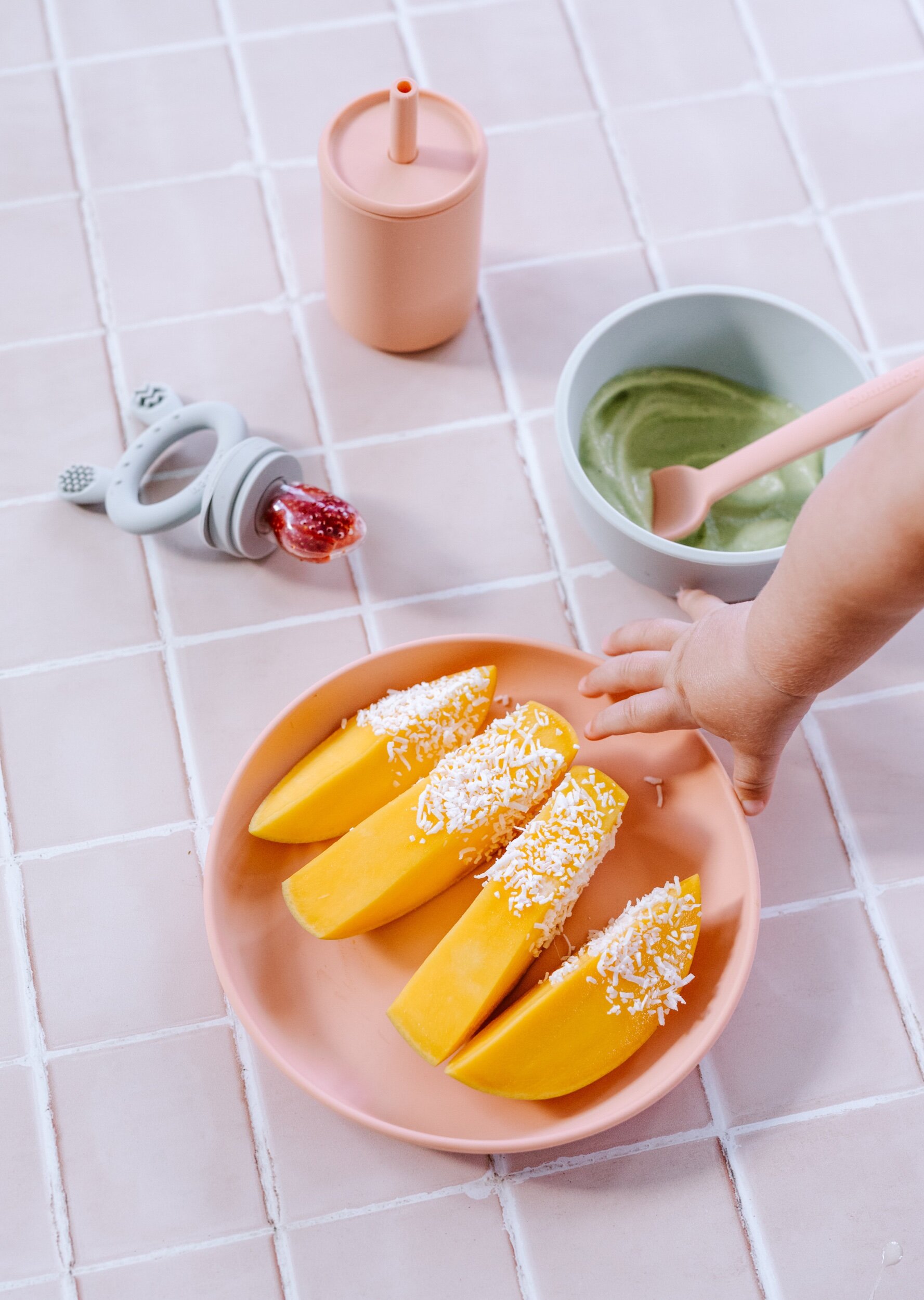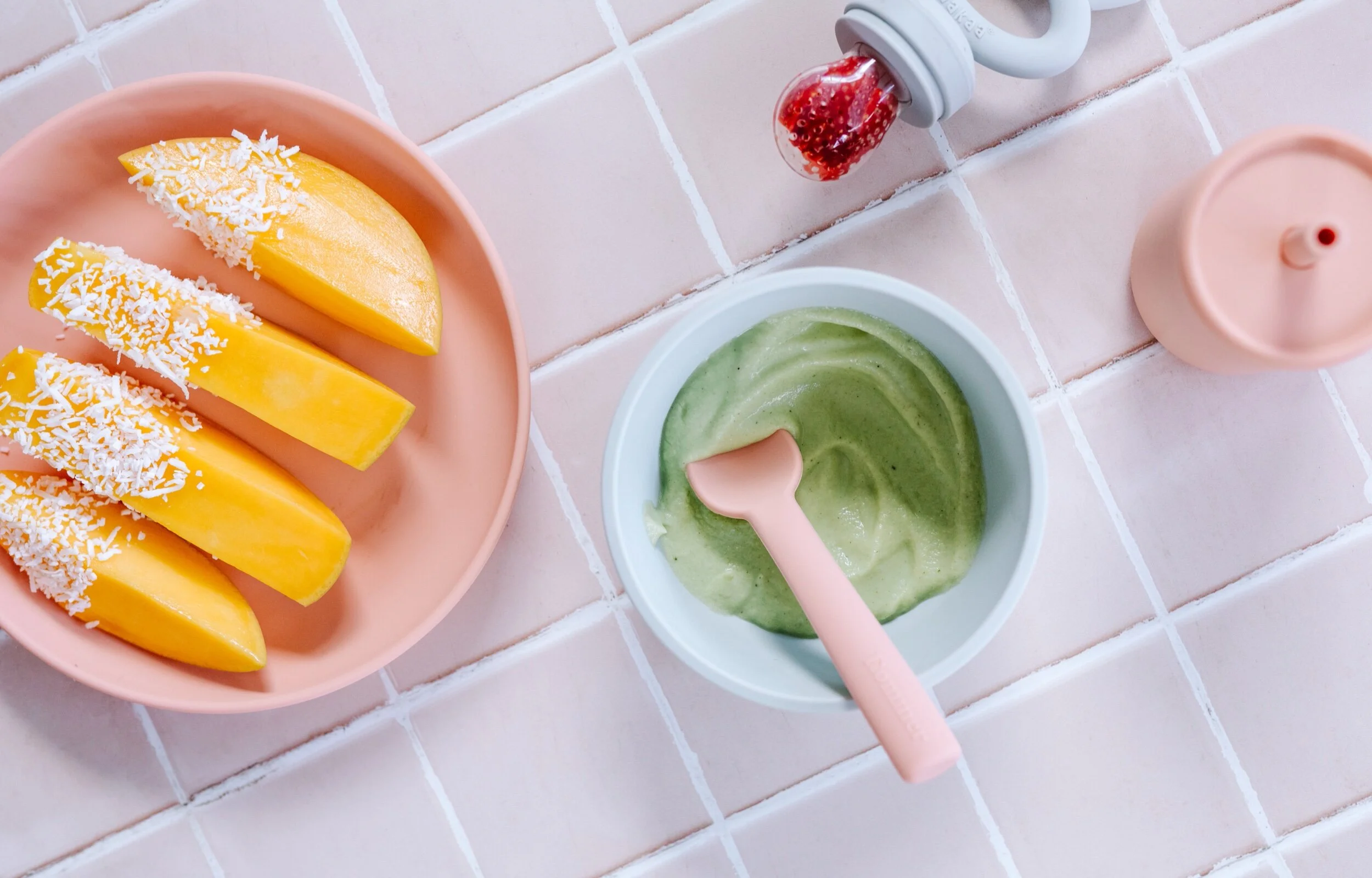Baby-Led Weaning
Hey lovelies,
If you actively follow me on Instagram (@elsas_wholesomelife), you may have seen that we have started introducing solids with Bowie. As a dietitian myself, Bowie’s nutrition and development when it comes to eating is very important, and while during my studies to become a dietitian we touched on paediatric nutrition, it is a whole specialised area of nutrition and that is why I wanted to collaborate with Luka from @boobtofood on this guest post about Baby Led Weaning. I have followed her for the last 6 months and find her posts and information incredibly helpful. She has self-published her book, Milk to Meals which I have linked down below.
We ourselves have decided to do a combination of BLW and purées, Bowie will also be eating a predominantly plant based and vegetarian diet. We have so far experimented with: avocado, pumpkin, sweet potato, broccoli, cauliflower, mango, banana, berries, watermelon, peach, nectarine, desiccated coconut (for rolling the fruits in), coconut yogurt, and hemp seeds. We continue to trial new veggies and fruits each week. We will also introduce all of the common allergens before 1 just to ensure he doesn’t have a hidden food allergy. If the topic of allergens is interesting to you, there is a whole chapter on this inside Milk to Meals too!
Hope you find this blog post useful, and don’t forget to check out Luka on IG @boobtofood
Elsa, xx
Baby-Led Weaning
You may have heard all the hype surrounding baby-led weaning (BLW) and be wondering what it actually is, and why so many parents are gravitating towards this method of feeding now!
Essentially, BLW is a fancy term for finger foods, and allowing your baby to have the independence to self-feed - as the name suggests, your baby is leading the weaning process!
There are many advantages to BLW such as:
Your baby has full control of how much they eat, thus teaching them how to self regulate their appetite, which is so important for future healthy eating habits (no more ‘here comes the aeroplane’).
Your baby has the opportunity to explore food, different tastes, different textures, smells and sensations. This is important because pureed food is always a very similar texture and can often be very sweet; whereas, with finger foods, your baby is generally eating one food at a time and discovering that different foods have different flavours. This variety can help them to develop into a more adventurous eater.
BLW helps your baby to develop their gag reflex and teaches them how much and how far they can put food into their mouths.
Can be easier for yourself, in that you don’t need to prepare separate meals for baby, as your baby generally eats what you and the family eat. I am a HUGE advocate for family meals and eating together whenever possible - not only does this help teach your baby how you expect them to behave at the table, and how to eat (e.g. watching you bite, chew, swallow food, not throw it!) it will also encourage them to eat more variety if they see you enjoying the same foods they are offered.
In saying that, whilst there are amazing benefits to BLW, sometimes it might not be right for your family straight away. My goal is to create relaxed and happy mealtimes, and if BLW is a huge stressor for you, then there is NOTHING wrong with starting your baby on puree foods! You are also able to do a combination of both puree and finger foods, as some foods you might feel comfortable with offering them finger foods, but some foods might stress you out and you’d rather puree them!
If you do start on puree, my only suggestion is to introduce at least SOME finger foods by 9 months of age, before they get fussy with different textures and to develop all of those muscles involved with swallowing and chewing etc.
When you do make the transition, the best thing to do is to introduce some very soft finger foods at the beginning of the meal. This is when your baby is most interested, hungry and engaged. You can then offer food via spoon-feeding as well, alongside or after the finger foods have been eaten - key word here is OFFER as they may not want any extra!
Some good foods to start with are very ripe avocado slices and steamed finger-shaped pieces of sweet potato or butternut pumpkin or broccoli stems, as these foods are all very soft and pose a low risk of choking.
Ah, choking, the biggest fear parents have when it comes to weaning, and rightly so! This is obviously something we definitely want to avoid at all costs, so how do we do that?
Studies have shown that when finger foods are offered to babies in a safe and appropriate way that there is no increase in incidences of choking for BLW vs spoon-feeding.
However, it is important to discuss so you understand the difference between gagging—a normal physiological reflex that your child most likely will experience—and choking—a life threatening situation that we want to avoid.
I hear a lot of stories about babies who always ‘choke’ however, when investigating a little it is actually them gagging. The gag reflex is a contraction of the back of the throat triggered by an object touching the roof of the mouth, the back of the tongue or the back of the throat. In babies, this is often triggered by fingers, food, spoons or even toys touching the back of the mouth.
When the reflex is activated, it thrusts objects forward towards the opening of the mouth, expelling any substances that the brain has deemed harmful. This reflex helps to PREVENT choking!
A child’s gag reflex often diminishes at around 6 months of age, which is generally when most babies are learning to eat solid food. Allowing your child to feed independently and explore their hands with their mouths will also help to reduce the reflex. Some little ones’ gag reflexes are more sensitive; they have what is known as a ‘hypersensitive’ gag reflex and, as a result, will gag more easily.
Gagging is very dramatic. It is often loud, and can look and sound quite scary. Babies may cough and some may even vomit. This is part of the reflex to help expel the food.
Gagging is developmentally normal, and is a baby’s way of ejecting the foods that may have been too big or hard for them to swallow. They thus learn for subsequent meals to take smaller bites, chew more thoroughly and not put so much in their mouth at once. It is recommended NOT to intervene if your baby is gagging, as you can pose the risk of pushing the food further back in their throat and causing them to choke. Try and allow them to expel the food on their own!
Choking however, is a life threatening situation that is NOT normal. The main difference between choking and gagging is that gagging is dramatic, and choking is silent. Choking occurs when an object becomes stuck in the throat or windpipe and blocks air from flowing into the lungs. This results in not enough oxygen being delivered to the body, causing oxygen deprivation. Foods that adapt the shape of the pharynx (round, ball-shaped foods) are of the highest danger, which is why foods need to be delivered to your baby in a safe shape and texture.
So, what is a safe size, shape and texture for BLW?
Size & Shape:
BLW foods should be as close to your own finger length and width as possible. Offering babies food cut like this will allow them to grasp with their hands and bite. If foods are too small or irregular shaped to cut into finger-shaped pieces, then cut food into very small pieces—e.g. cherry tomatoes would be quartered, strawberries quartered, grapes quartered—these foods are sometimes easier to offer once your baby has developed their pincer grasp (when they start to pick food up with a pinch like motion as opposed to using their whole palm, often around 9ish months).
Texture:
The texture should be soft enough that if you were to pinch it with your thumb and forefinger, the food would easily flatten—like if your baby were to squash the food between their tongue and roof of their mouth. For meat, offer it as softly cooked as possible—such as slow cooked or poached meats.
If the fruits or vegetables are too hard, you can steam, boil or bake until soft. Remove any peel or rind from the fruit and vegetables. Try and avoid very stringy or raw vegetables e.g. green beans, celery, raw carrots etc. If fruit contains stones or large pips—such as peaches, cherries, etc.—always remove these prior to offering to your baby.
Studies show the foods that pose the biggest choking risk are:
Sausages/hot dogs, whole nuts, raw carrots, lollies, meat, popcorn, fish with bones, grapes, cherry tomatoes, raw apples, fruit pips and stones.
I hope this gives you some clarity around BLW, and also takes some of the pressure off! Like I said, the MOST important thing is that mealtime is comfortable, enjoyable, a fun experience and that you are providing them with nutritious food!
Luka xxx
Boob to Food
Here are a couple of great BLW recipes to get you started from my book Milk to Meals:
baby friendly recipes
BAKED BANANA AND TAHINI
Making time: 15 minutes
Benefits:
The humble banana made nutrient dense with the addition of tahini and hemp seeds. Tahini is a rich source of calcium, healthy fats, protein and many other vitamins and minerals.
Age appropriate: 6 months +
Ingredients:
1 banana
1 tsp coconut oil
Small pinch cinnamon
1 tsp tahini*see note
Sprinkle of hemp seeds
Method:
Preheat the oven to 180C (356F) fan bake.
Cut the banana in half lengthwise and remove the skin.
Place the banana onto lined baking tray and drizzle coconut oil on top.
Bake for 10-15 minutes until browned and caramelised.
Allow to cool enough for your baby to handle.
Top with the tahini and sprinkle on hemp seeds prior to serving.
Notes:
* Tahini is a paste made from sesame seeds. Sesame seeds are an allergen food.
Also delicious if tahini is substituted for nut butter of any kind.
If spoon-feeding, you can mash it whilst warm from the oven, then stir through the tahini and hemp seeds.
FERMENTED LENTIL DOSAS
Benefits: These dosas are perfect for little fingers, full of protein and are fermented for added probiotic bacteria and increased digestibility.
Age Appropriate: 8 months +
Serves: Yields 12-14 dosas
Ingredients:
1 cup red lentils
1 cup millet or quinoa
¼ tsp sea salt
¼ tsp ground turmeric
½ tsp garlic powder
2 finely chopped spring onions
Ghee or coconut oil for frying
Method:
Wash the lentils and millet/quinoa.
Transfer both into a bowl and cover with hot water.
Soak for 8 hours.
Drain, keeping the soaking water.
Blend, adding enough soaking water to make a thick batter.
Transfer to a clean glass jar, cover tightly with plastic/silicone wrap and let ferment for 12-24 hours, depending on room temperature; the batter is ready when bubbles start to form.
Whisk in the remaining ingredients.
Heat the oil in a frypan over medium-low heat and spoon in the pancake mix, approximately 2 TBSP of mix per pancake.
Cook over a low heat until it cooks through, flip over and cook the other side until golden.
Serve immediately or store the pancakes, or the batter (prior to cooking in step 8) in the fridge for up to 3 days.
Notes:
The batter can be frozen (prior to cooking in step 8) in a freezer proof container for up to 3 months.
Thanks for reading
love, Elsa & Luka.
xx












